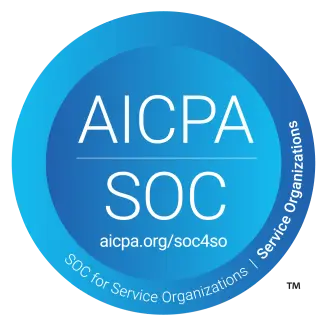On September 20, 2022, we hosted a virtual webinar on “Automation in auditing at scale using the MindBridge API.” The main focus of this webinar was to explore highlights of our summer product release —our Open API, deep dive into how the API can be implemented, and provide sample use cases highlighting API integrations.
Thank you to everyone that attended the live event. For anyone that missed it, you can view the webinar recording here or keep reading for a recap of some of the most valuable key takeaways.
Session hosts

Product Manager
MindBridge

Software Dev Manager
MindBridge
MindBridge and APIs
We kicked off the webinar by giving attendees a brief overview of MindBridge and APIs. And while most attendees are aware of who we are and what APIs can accomplish, this helped to set the stage for exploring how the MindBridge API can empower your data to move at your organization’s speed.
MindBridge exists to empower every organization to minimize unknown financial and operational risks in a highly efficient manner. Today, MindBridge does that through various analysis types, focusing on a bottom-up analysis of transactional data and monetary flows.
The global standard for AI-powered risk discovery
Manifested in the market today, approximately 25,000 audited financial professionals have used MindBridge. To date, the company has analyzed 51 billion transactions and counting, and we have provided analysis for roughly 16,000 organizations globally.
MindBridge is accredited through the ICAEW and offers a secure platform through ISO certifications and SOC 2 Type 2.
Our discovery platform
The platform itself is easy to learn. We offer in-app training and a knowledge base that can help get team members consuming insights in just a handful of hours. The application also offers the ability to import data through a step-by-step wizard and provides in-app data transformation capabilities.
Recently, with our latest mid-year release, we have opened our risk-scoring cloud platform with industry-standard Application Programming Interfaces (APIs) that supports risk assessment automation.
Finally, MindBridge analyzes data via control points —using a combination of rules, statistical methods, and machine learning. We then bundle those control points to risk scores, which are the primary insights users can consume and apply to various scenarios inside their organization and control environment.
Product snapshot
MindBridge is building a platform that can provide both risk assessment and audit responses. With several pre-configured analyses, we can analyze more and more sensible financial and operational data. As we head into 2023, we are looking to take the next step beyond existing analysis types to provide more multifile capabilities and the ability to trace transactions through business processes to help identify anomalies and generate insights more quickly for our users.
Additionally, MindBridge is looking to improve automation and create new efficiencies. You will see these efforts reflected in several capabilities currently existing inside the application, but the one we are here to discuss today is the API.
“APIs can provide value for all organizations regardless of size or technical complexity.”
What is an API, and how does it work?
API stands for Application Programming Interface. The interface can be thought of as a contract of service between two applications. This contract defines how the two communicate with each other using requests and responses.” For example, the weather bureau’s software system contains daily weather data. The weather app on your phone “talks” to this system via APIs and shows you daily weather updates.
APIs can provide value for all organizations regardless of size or technical complexity. The value of APIs comes from their ability to provide repeatability via automation, create workflow efficiencies, and scale across different use cases.
The available actions within an API are unique to the application and the API. The menu of available actions is usually found within site technical documentation. MindBridge offers tutorial documentation that provides step-by-step guidance on how to perform actions and basic workflows using the MindBridge API. This documentation provides a low or free entry point for users to start interacting with the API.
REST APIs
Representational state transfer (REST) APIs are the most popular and flexible APIs on the web. The main feature of a REST API is statelessness; meaning servers do not save client data between requests. In addition, they incorporate a shared design principle that makes it easier for developers to connect platforms.
Forward-looking design
The road to API development at MindBridge has been a long road. It has involved a lot of upgrades of our existing technology to support the future technology of this application framework. During this process, we experienced a positive design philosophy in which we design features for today while considering the features of tomorrow.
To fulfill this philosophy, you must understand existing technological landscapes, as well as the future technological landscapes that may occur. So this was a core tenant we used when looking into our API and our application as a whole.
The future of APIs
The future of APIs consists of increasing access for global users by democratizing access to data and allowing people to gain further insights they wouldn’t have gained in any other way. An excellent example of this would be IoT infrastructures in people’s homes, such as smart light bulbs or any other smart technology in your home that provides meaningful insights to users.
One of the other tenants we look forward to is a focus on responsive systems that provide meaningful feedback to both human users and remote systems. The future of APIs will go more toward systems that can resolve more minor problems via a responsive communications framework that allows machines to communicate autonomously with one another. This will enable users of these systems to stop focusing on mundane tasks and add value to their organizations.
The programmable economy
This idea ties directly into the concept of the programmable economy of tomorrow, which represents the commodification of user data and the user’s ability to curate, create insights, and gain control of their data.
The programmable economy of tomorrow is going to be an exponential form of the currently existing systems that exist today. The increased availability and simplicity of APIs, as well as the ability to create and consume value-added services, will allow users to generate revenue streams themselves. This is already happening today, but we’re going to see it happening more and more over time.
We will further improve the efficiency of data curation. One of the problems of the world we live in today is there’s just too much data. So filtering out data that is not relevant is a crucial part of the process that allows you to make decisions more efficiently and with better accuracy.
Business scenarios with the MindBridge API
Now that the stage has been set, the webinar shifted to provide a few business use cases (with supporting context) in which the MindBridge API can provide value.
1. Integrating with business intelligence tools
Scenario:
Existing B.I. and reporting frameworks may not accurately reflect risk.
Solution:
Use standardized results to ember MindBridge risk scoring into existing reporting workflows.
Benefits:
Enriched results support more efficient and effective decision making
MindBridge risk scoring provides additional data for users to curate insights
Perform deeper analysis across multiple data sources
2. Integrating with your workflow
Scenario:
Documenting evidence between systems of insight and systems of record can be a manual process.
Solution:
Automate the flow of evidence from MindBridge into working papers
Benefits:
Reduce time associated with exporting and importing evidence into your system of record
Reduce manual recording errors, which can have costly downstream impacts
Accelerate consumption of insights and decision making
One of the most important things that come from our product is the results, which are viewable in your data table in the analysis results section. The API results have a little more flexibility than the data table; they are paginated, allowing you to navigate through the data in bite-sized chunks. This will enable you to curate the results in ways you may not be able to in the current application due to the flexibility of a pure data access protocol.
Additionally, there is the ability to filter and sort entries. You’re able to select the columns of data that you want to receive and not the columns of data that you don’t. For example, you could have a filter that only considers extremely high-risk transactions with that data, then breaks out information related to the entries within that transaction and provide actionable insights to your organization.
3. Data management at scale
Scenario:
Manual import of data can be time-consuming and produce errors
Solution:
Import analysis data using MindBridge API
Benefits:
Reduce time spent in the data import user interface
Perform bulk import actions
Repeatable workflow may reduce import errors
Use API permissions to ensure the right users have the right access
One of the biggest problems we used to run into was getting data into the system. Data comes from many sources and has many different formats. Because of this, we have developed systems that can process that information into meaningful insights in a pre-analysis phase to ensure that our analytics provide relevant and valid insights.
Leveraging the MindBridge API to upload data is a simple call to upload the data into our system and have it available for usage. If you happen to have more information, for example, you know your column mappings and can give them to us in advance, we will process the next step of information for you automatically. That applies to every step within the workflow. If you can provide us with enough metadata to complete your task, we will do it for you now from an API perspective.
This enables organizations with more standardized data to easily leverage importing and complete data processing in an autonomous way. With this functionality, a sophisticated organization would be able to complete all ingestion flows, ensure that their analysis is in a state that is ready to be analyzed, and launch the analysis.
Getting started with the MindBridge API
It’s important to understand that the API is available for users today. In addition, we have technical documentation that lives in the app and provide more tutorial information in the knowledge base. Further, if you don’t see something inside the application, reach out to your account manager, and they’ll be able to walk you through the steps to get access to that information.
Similarly, if you have any questions about use cases, specific objectives, etc., book a demo or reach out to info@mindbridge.ai, and we will be more than happy to assist you.





